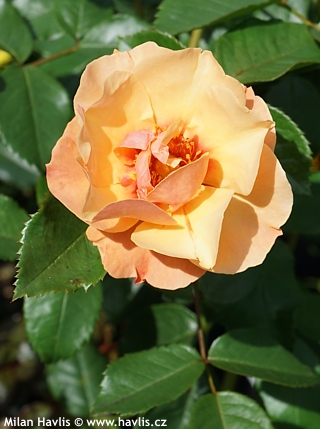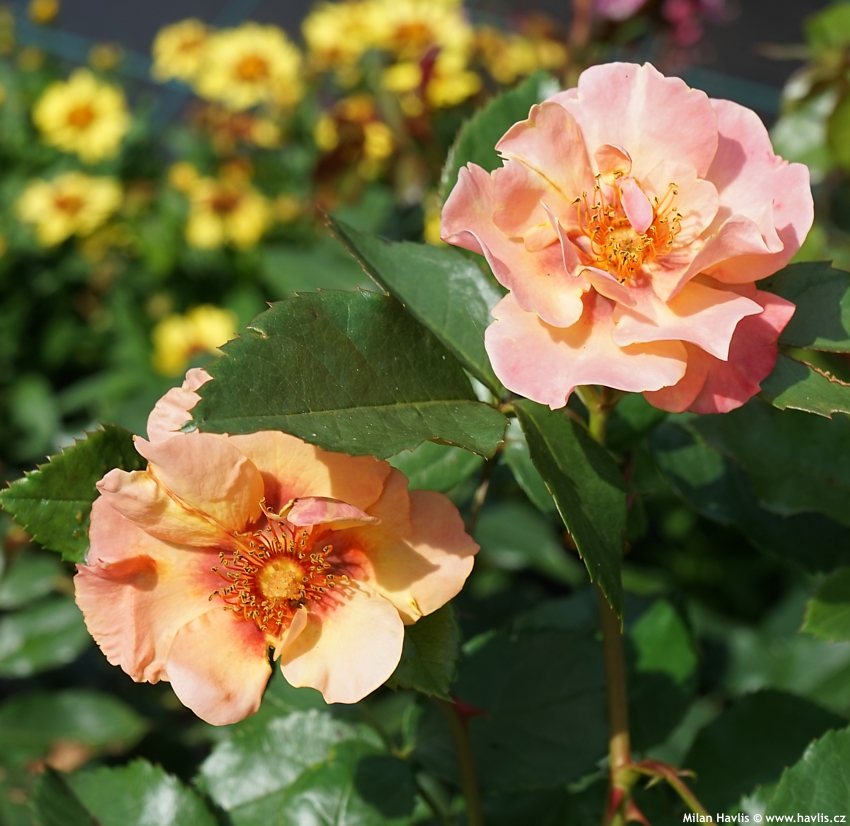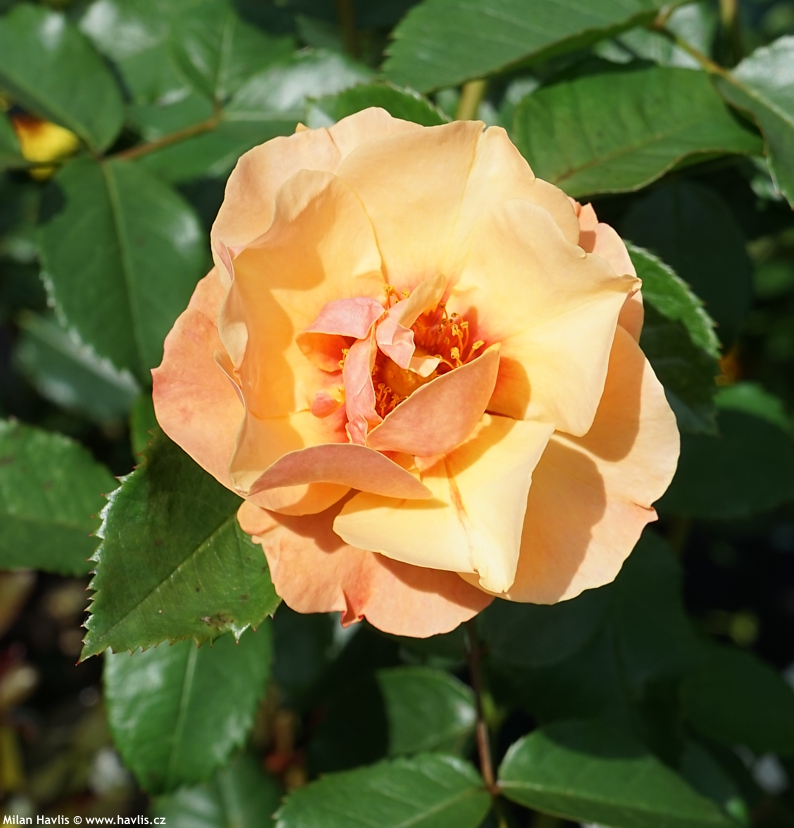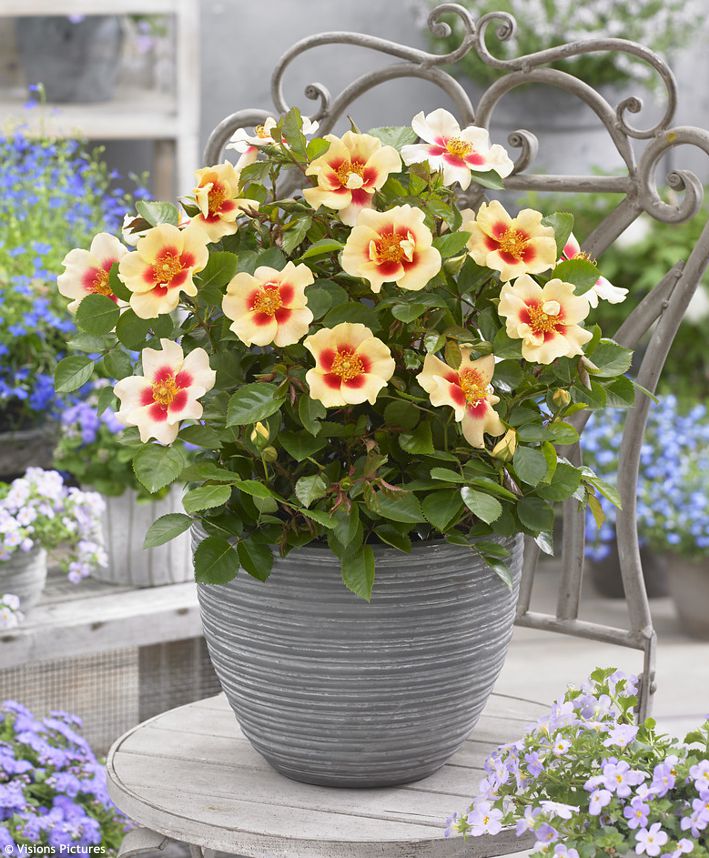Rosa 'Vispers' (x Hulthemosa) PERSIAN SUN® hybrid Persian shrub rose (M. Vissers)
Rosa
Rosa persica is a rose species from Afghanistan, Iran, and Central Asia which used to be listed as a separate species Hulthemia. Its flowers are beautiful and unique but everything else is difficult – thorny foliage, unsightly habit, and unreliable garden performance – they are almost impossible to transplant. Luckily, they respond well to crossing with other, reliable rose species and the first hybrids were made after 2000. Their scientific name is x Hulthemosa but for marketing purposes they are still called just Rosa.
PERSIAN SUN® hybrid Persian rose shines with its semi-double, golden orange flowers. They are usually composed of 10 petals and decorated with slightly blurred, red flecks forming a wide eye in the centre owing to which they resemble hibiscus flowers. The main flowering season is from late May until mid July, then comes a short summer break, and new flowers reappear from late summer till early autumn.
Deciduous leaves are medium green, partly glossy, and usually composed of 5 leaflets. They are often healthy until late summer when rust or mildew may be a slight problem but will not affect plant’s health. It grows moderately into a densely branched, upright shrub with deep red stems reaching about 1m tall and a little less wide. It was bred by Martin Vissers from Belgium around 2015 as a cross between another Hulthemosa hybrid Alissar, Princess of Phoenicia, and a floribunda rose Julia Child™.
Planting instructions: Prepare a hole of size 30x30 cm. Put your rose in the way that the grafting point is 3 cm deep in the soil. Water well and cover new shoots with soil or bark mulch about 15 cm high. Roses tolerate wide range of soils but thrive in deep, humus-rich, moist but well-drained soil, in full sun.
Pruning: Cut the branches in halves in autumn and prune hard to 3-5 live buds in spring after danger of frosts. Spent flowers are best removed as they begin to fade. Cut off spent flowering clusters just above the leaf with 5 leaflets or deeper if rejuvenating is desired during vegetation and follow a regular feeding programme.
Last update: 16-03-2021







































